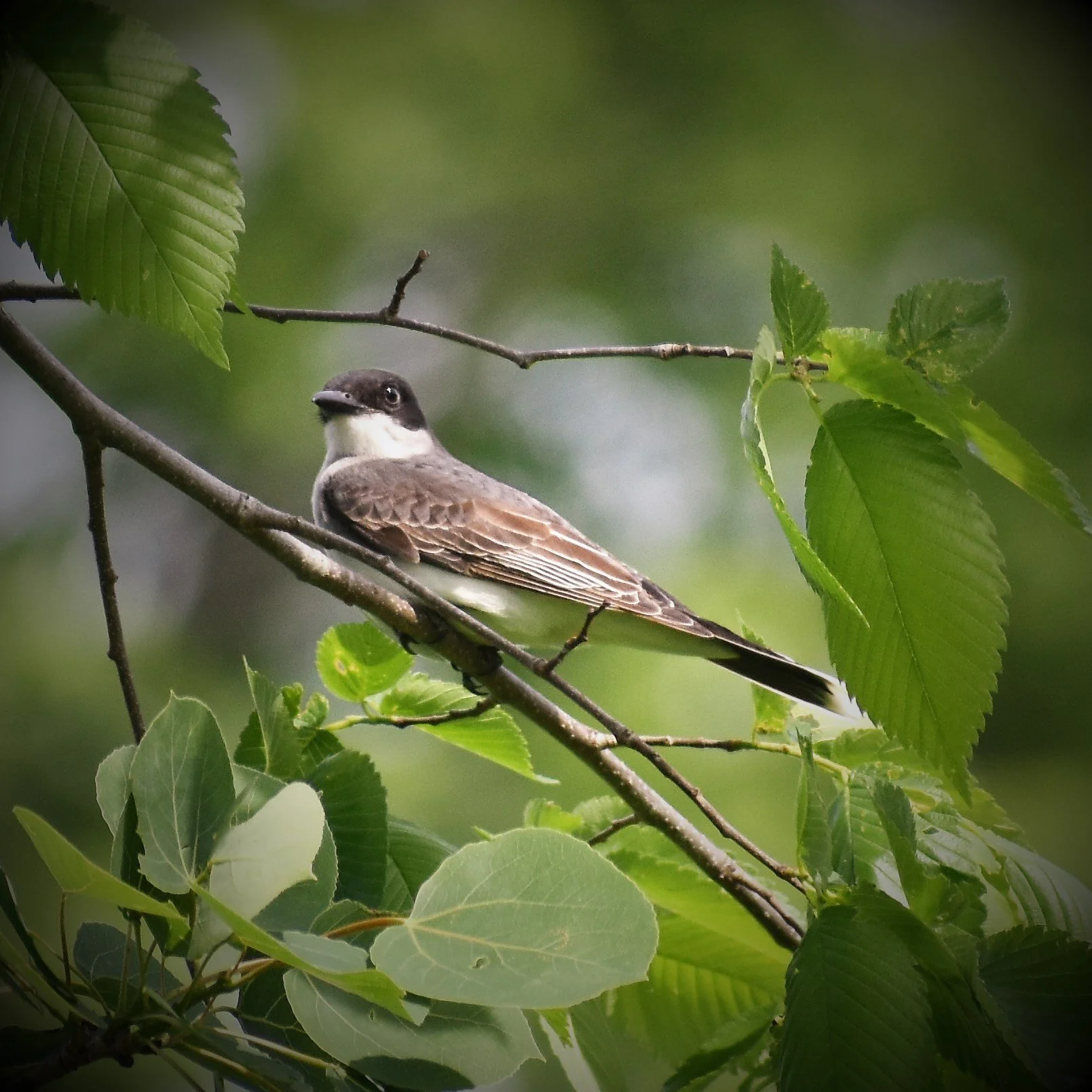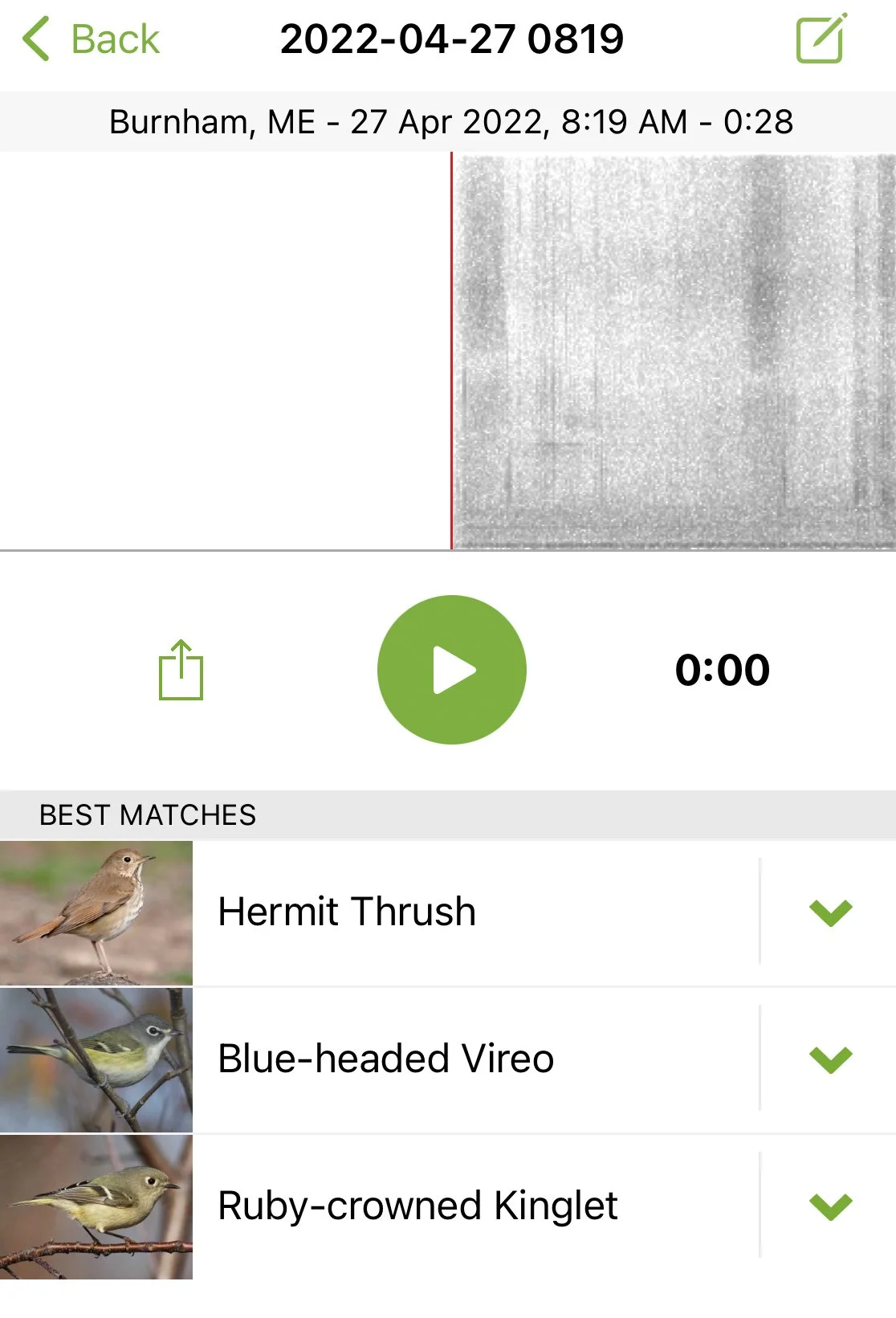After months of winter hush, spring feels loud. It begins with that first ‘hey sweetie’ from a frisky chickadee in late February. And when the red-winged blackbirds first pierce the quiet, you know the springtime noise is about to get real.
It’s been more than a month since the red-wings arrived on my property, and new bird arrivals seem to happen daily. Phoebes, tufted titmice, white-breasted nuthatches, cardinals, bluebirds - they all have calls and appearances that I have successfully learned (and most importantly, remember!). But now that we’re in late April, the warblers are arriving. With very few exceptions, I can’t identify them by their song and rarely get to observe them long enough to id them by appearance. So what to do?
There’s an app for that! Merlin is a bird identification app developed by our partners at The Cornell Lab. It offers assistance identifying birds by appearance, and a newer feature - sound id. As I’ve discovered, the latter is easy to use, and it works. And it’s free. Cornell describes it best: “Just pull out your smartphone, press record, and watch as Merlin shows matches in real time.”
After many underwhelming experiences with nature apps, I was deeply skeptical that Merlin would be any different. But, driven by a stubborn need to know what I am listening to out there, I gave it a shot. You should, too. Download Merlin Bird ID
The first time you open the Merlin app, you will be prompted to download a library of birds, called a Bird Pack. The file is large and best done before heading out to find your first bird! I opted for the smaller, US: Northeast Bird Pack over the more comprehensive pack for US and Canada.
Once your set up is complete, head outside. Hear birds? Choose Sound ID and press the microphone icon to start. Your phone will start recording an audio file and Merlin will convert the audio into an image called a spectrogram. It is the spectrogram that powers Merlin’s sound id capability. (Read more about that here: https://www.macaulaylibrary.org/2021/06/22/behind-the-scenes-of-sound-id-in-merlin/). Each time a new bird is identified, its species name is added to the list below the spectrogram. If one of those birds is detected again, Merlin will highlight the name in yellow, so that you can begin to match the sound with the bird that’s making it.
a screenshot from the app, showing woodcock as the only identified bird
I first tested Merlin with birds that I already know, and I found it to be surprisingly accurate. Based on my use so far, it does not always pick up every single bird that I can hear singing or calling - favoring birds with louder or longer calls over those passing through in the distance, for example. But of the birds it registers, it’s accuracy is good. In this recorded observation, for example, it correctly identified woodcocks, but completely missed the winnows of the snipe, which were also flying that evening.
In my first month of use, Merlin consistently failed to identify a black-billed cuckoo. Perhaps this cuckoo is not in the Northeast Bird Pack. Otherwise, it’s been a reliable source for preliminary ids, which I choose to confirm the old-fashioned way with guide books and Cornell’s All About Birds.
This morning, I tested the app in my backyard to see how many species it could pick up when the springtime chorus was in high gear. As you can see, it picked up a lot. All but the warbler are songs I know and can identify without Merlin’s help. Without the app, though, I would have missed the yellow-rumped warbler. I clicked the down arrow next to its name, and I was able to access recordings of its songs and calls - allowing me to confirm that this species is indeed in my yard. This elusive little bird, which I can readily id by sight, may have gone unnoticed by me for many more days if not for this sound id assistance.
Also this morning, two more spring migrants arrived: hermit thrush and blue-headed vireo. The ruby-crowned kinglets in this recording appeared last week - and they continue to sing. All.Day.Long. Thanks to Merlin, I now know who’s responsible for this repetitive chatter. Have a listen.
Merlin is an accessible and fun way to add to your knowledge and awareness of the world around us, and an easy entre into the world of birding.
Note: If you listened closely to the recordings included here, you heard more than birds singing. Springtime also brings the frogs - wood frogs, peepers, northern leopard frogs (my favorite spring sound) have all started to chorus on my property. Here’s a quick capture of some of these sounds (note: boreal chorus frog is not in Maine). You can learn a bit more about our Maine frogs and toads here and here.
Jennifer Brockway is Outreach Coordinator for Somerset County SWCD
Eastern Kingbird photo, jbrockway




